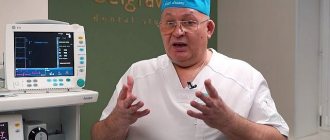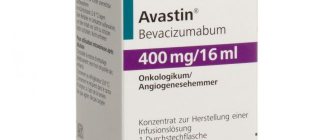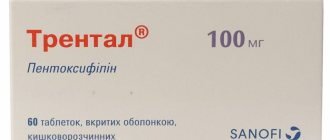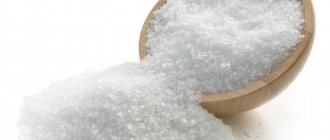Vasostenone concentrate for the preparation of solution for infusion for intravenous/arterial 20 µg/ml amp 1 ml N 10
Active substance: alprostadil (alprostadil)
pharmachologic effect
Prostaglandin E1 preparation.
Improves microcirculation and peripheral circulation, has an angioprotective effect. When administered systemically, it causes relaxation of smooth muscle fibers, has a vasodilating effect, reduces peripheral vascular resistance, and lowers blood pressure. In this case, there is a reflex increase in cardiac output and heart rate. Improves the rheological properties of blood, helping to increase the elasticity of red blood cells and reducing platelet aggregation and neutrophil activity, increases the fibrinolytic activity of the blood. It affects metabolism, increases the utilization of glucose and oxygen, suppresses the release of free radicals and lysosomal enzymes from granulocytes and macrophages, stimulates protein synthesis, has a beneficial effect on lipid metabolism (suppressing cholesterol synthesis and reducing LDL concentration), and inhibits the proliferation of smooth muscle cells.
Has a stimulating effect on the smooth muscles of the intestines, bladder, and uterus; suppresses the secretion of gastric juice.
When administered intracavernosally, it blocks α1-adrenergic receptors in the tissues of the penis, has a relaxing effect on the smooth muscles of the cavernous bodies, increases blood flow and improves microcirculation. Dilation of the cavernous arteries and vessels of the trabecular smooth muscle of the cavernous bodies leads to a rapid increase in blood flow and dilatation of the lacunar spaces in the cavernous bodies. Venous outflow through the vessels located under the tunica albuginea is limited, which stimulates the development of an erection (“corporal veno-occlusive mechanism”). Onset of action is 5-10 minutes, duration is 1-3 hours.
Dosage regimen
Individual, depending on the indications and dosage form used.
Use during pregnancy and breastfeeding
Alprostadil is contraindicated during pregnancy and lactation (breastfeeding).
Use for liver dysfunction
Contraindications: liver dysfunction, liver disease (including history).
Use in children
In newborns, it should be used under constant blood pressure monitoring, with mandatory conditions for mechanical ventilation.
There is currently no experience with intracavernosal administration in patients under 18 years of age.
Use in elderly patients
There is currently no experience with intracavernosal administration in patients over 75 years of age.
Use IV and IV with caution in case of extensive vascular lesions in diabetes mellitus (in elderly patients).
Brief instructions for use of the drug Vasostenon
The use of Vasostenone is indicated in the presence of chronic diseases of the peripheral arteries in adult patients. This drug has a number of contraindications, among which are the following:
- sensitivity to the components of the product;
- the presence of diseases or disorders of the heart;
- suspected pulmonary edema;
- liver disease, renal dysfunction;
- bleeding of various origins in the digestive organs;
- stroke, arterial hypotension in severe stages;
- chronic lung diseases;
- pregnancy, lactation, childhood.
Before using Vasostenone, you should read its description, because in combination with certain medications, the effectiveness of treatment may vary. You should also familiarize yourself with the peculiarities of using Vasostenone, described in the instructions for it. This medication is administered intravenously or intra-arterially with a special syringe, infusion pump or catheter.
The dosage of the drug is calculated by the doctor in accordance with the age and health status of the patient. At the beginning of the therapeutic course, it is advisable to use the minimum dose of the drug, increasing it gradually if no negative reaction is observed. Vasostenone has many positive reviews due to the effectiveness it has on the body when treated correctly.
When treating with this pharmaceutical drug, it is important to strictly adhere to the prescribed dosage, since its exaggeration can cause adverse reactions from the nervous, respiratory, cardiovascular, digestive and other systems of the body.
The cost of Vasostenone is high, therefore, before purchasing it, it is advisable to make sure that the patient does not have any allergic reactions to this medication or is individually intolerant to it. You cannot choose cheaper analogues of Vasostenone without first consulting a doctor, since an incorrectly selected drug can significantly worsen a person’s health.
Vasostenone
Compound:
active ingredient: alprostadil;
1 ampoule contains 20 mcg of alprostadil;
excipients: ethanol.
Dosage form: concentrate for the preparation of solution for infusion.
Basic physical and chemical properties: colorless transparent solution without mechanical impurities.
Pharmacotherapeutic group: Prostaglandins. ATS code C01E A01.
Alprostadil, the active substance of the drug VAZOSTENON , is a vasodilator.
It increases blood flow by dilating arterioles and precapillary sphincters.
Alprostadil improves microcirculation and rheological abilities of the blood.
After intravenous use in healthy volunteers and patients, an increase in the elasticity of erythrocytes and inhibition of their aggregation ex vivo is observed.
Alprostadil effectively inhibits platelet activation in vitro.
This effect also extends to the shape, aggregation, secretion of substances contained in the granules, and the release of thromboxane, a substance that promotes aggregation.
The drug leads to a reduction in the incidence of arterial blood clots.
| UVAGA: ILLEGAL IMPORTATION DO NOT REGISTER A DOCTOR'S THANKS! |
The company with the interconnected name "VALARTIN PHARMA", which is the only official distributor registered in Ukraine, is ahead of having entered the pharmaceutical market of Ukraine There is no registration of medicinal drug under the similar name “VASOSTENON”, which is illegal, because violation of legislation, imports from the Russian Federation .
In Ukraine, the medical prescription “VASOSTENON” was re-registered by the Order of the Ministry of Health dated December 22, 2020. No. 2970, Registration information No. UA/14734/01/01, issuer and applicant for the medical service - company AT "KEVELT", Estonia.
Labeling of packages of the legal medicinal product "VAZOSTENON" in the Ukrainian language, the skin packaging should be accompanied by Ukrainian instructions and sent to the registration number in Ukraine .
The skin series of the registered medicinal product “VASOSTENON”, which is supplied by LLC “VALARTIN PHARMA” in the territory of Ukraine, is accompanied by a Certificate of Vibrator and Visnovk’s virility about the virility of the medicinal product imported to Ukraine, issued by the Powers by the new service of Ukraine for medicinal purposes and drug control, on the basis of the results of the sovereign input luminosity control. Submitted documents for the support of a companion may be given by a pharmacy deposit.
Labeling of packages of the unregistered medicinal product “VAZOSTENON”, which is illegally imported from the Russian Federation, vikonana Russian, packaging of the drug is accompanied by Russian instructions , the registration authority is additionally indicated on the packaging in the instructions ійного позіденья — “PJSC “Pharmsintez”, Russia, Leningrad region, Vsevolozhsk district -n, mountains village Kuzmolovsky, st. Kapitolovo, No. 134, letter 1." The registration number of the Russian Federation is indicated.
The design of the “Russian” packaging is similar to the design of a legal drug registered in Ukraine, which can be misled by fellow residents.
I LOVE YOUR RESPECT!!!
- Regular legislation has prohibited of unregistered medicinal products on the territory of Ukraine
- The government authority in the field of medicinal products - the State Service of Ukraine for medicinal products and drug control - warns about the need to add medicinal products to the subjects of government with a special license and to explicit documents that confirm the quality of the medical profession.
- The medicinal drug “VASOSTENON” requires a special temperature regime during transportation and storage (store in the refrigerator at a temperature of 2° to 8° C). Failure to adjust the temperature regime can result in a toxic influx on the fluid and safety of the medicinal product during medical treatment, which can pose a threat to the life and health of patients.
- In the case of illegally imported substances, it is impossible to monitor and guarantee the maintenance of the species' minds, transportation and conservation of medical supplies, which can lead to unnecessary side reactions when it is frozen and can lead to a threat to health and life.
- The medicinal drug “VAZOSTENON” is stagnant in life-threatening conditions, so safety in case of stagnation may be a must.
Individuals who are engaged in illegal (illegal) transportation through the border cordon of Ukraine of the medicinal company "Vasostenon" from the Russian Federation, which is not registered in Ukraine and has not passed the government's entry control in Ukraine, harm Ukrainian associates to the detriment of bake and actually do not bear any responsibility for the acidity, the safety and effectiveness of this drug, as well as its actual similarity. Even the rest may be falsified !
BE HAPPY!
The acquisition of medicinal products unregistered in Ukraine “from hand” and through the Internet leads to the risk of falsified medicinal products. Do not let the life and health of your loved ones become unsafe, even in critical situations this can lead to fatal consequences!
More about the product:
- Instructions for medical use of the drug VAZOSTENON
- Registration certificate
Vasostenone instructions for use
COMPOSITION AND FORM OF RELEASE: conc. d/p solution d/inf 20 mcg/ml amp. 1 ml, in cardboard packaging, No. 5 Alprostadil 20 mcg/ml B PHARMACOLOGICAL PROPERTIES: Pharmacodynamics . Alprostadil, the active substance of the drug Vasostenone, is a vasodilator. It increases blood flow by dilating arterioles and precapillary sphincters. Alprostadil improves microcirculation and rheological properties of blood. After intravenous use in healthy volunteers and patients, an increase in the elasticity of erythrocytes and inhibition of their aggregation ex vivo is observed. Alprostadil effectively inhibits platelet activation in vitro. This effect also extends to the shape, aggregation, secretion of substances contained in the granules, and to the release of thromboxane, an aggregation-promoting substance. The drug leads to a reduction in the incidence of arterial blood clots. In humans, it stimulates fibrinolysis and increases certain indicators of endogenous fibrinolysis (plasminogen, plasmin, tissue plasminogen activator activity). Pharmacokinetics. After intravenous administration of alprostadil at a dose of 60 mcg/2 h, Cmax in the plasma of healthy volunteers was 6 pg/ml higher than Cmax in the placebo phase (2.4 pg/ml). T½ in the alpha phase is about 0.2 min (calculated value), and in the beta phase - about 8 min. Thus, equilibrium concentration is reached shortly after the start of the infusion. Alprostadil is metabolized in the lungs - about 80-90% in the first pass. The primary metabolites that are formed during the first pass - 15-keto-PGE1, PGE0 (13,14-dihydroPGE1) and 15-keto-PGE0 (13,14-dihydro-15-keto-PGE1) - in turn, are subject to further degradation, in particular by beta-oxidation and omega-oxidation. Metabolites are excreted in urine (88%) and feces (12%). Complete elimination occurs within 72 hours. Primary metabolites of only 15-keto-PGE0 can be detected in vitro using lung homogenates. After administration of alprostadil 60 mcg/2 h in healthy volunteers, PGE0 reaches a plasma Cmax of 11.8 pg/ml after the placebo phase (1.7 pg/ml), with T½ being about 2 min in the alpha phase and about 33 min in beta phase. Cmax is reached after 119 minutes. The corresponding values for 15-keto-PGE0 are as follows: Cmax 151 pg/ml (placebo 8 μg/ml), T½ in the alpha phase about 2 min, T½ in the beta phase 20 min and Tmax 106 min. Alprostadil is 93% bound to macromolecular components of blood plasma.
INDICATIONS: treatment of chronic obliterating diseases of peripheral arteries of stages III and IV in adults in cases where it is impossible to perform a procedure with a vasodilator effect or if such a procedure has not been successful. IV administration is not recommended for the treatment of stage IV chronic occlusive peripheral artery disease.
APPLICATION: Vasostenone is intended for intra-arterial or intravenous administration in the form of a solution. To administer the drug, it is recommended to use an automatic syringe or an infusion pump and a catheter for infusion therapy. The dosage schedule presents daily doses calculated for patients with normal renal function whose body weight is 70 kg. In patients with impaired renal function, if the level of creatinine in the blood exceeds the norm (in men >97 µmol/l, in women >80 µmol/l), at the beginning of therapy the daily dose should be reduced by 2 times. Depending on the clinical condition of the patient, the dose can be increased within 2-3 days to that intended for patients with normal renal function. Intra-arterial administration. With intra-arterial administration, the likelihood of adverse reactions is higher in the case of short-term infusion. Based on this, in order to ensure the safety of the patient, it is recommended to start the infusion with low doses and, in the absence of adverse reactions, increase them. To prevent thromboembolic complications, it is recommended to administer 15 thousand IU of heparin per day. Intra-arterial administration over 12 hours. Daily dose - 5-30 mcg, recommended dosage 0.1-0.6 ng/kg/min. When choosing a daily dose (5–30 mcg), Vasostenone should be diluted in 50 ml of 0.9% NaCl and administered over 12 hours using an automatic syringe. Intra-arterial administration over 1-2 hours. Daily dose - 10-20 mcg, recommended dosage at a dose of 10 mcg - 1.2 ng/kg/min; at a dose of 20 mcg - 2.4 ng/kg/min. Intra-arterial administration during surgery. During reconstructive surgery, 5–40 mcg of the drug diluted in 50 ml of 0.9% NaCl is administered intravenously. IV administration. The daily dose is 40 mcg of alprostadil 2 times a day or 60 mcg of alprostadil once a day. The recommended dosage is 4.7 ng/kg/min. 40 mcg of alprostadil should be diluted in 50–250 ml of 0.9% NaCl and injected into a vein over 2 hours in the morning and evening. 60 mcg of alprostadil should be diluted in 50–250 ml of 0.9% NaCl and administered intravenously over 3 hours once a day.
CONTRAINDICATIONS: hypersensitivity to alprostadil or other components of the drug. Cardiac dysfunction: decompensated heart failure FC III and IV according to the NYHA classification; heart failure due to previous ineffective treatment; arrhythmia of various etiologies, including arrhythmia causing hemodynamic disturbances; cardiac arrhythmia due to previous ineffective treatment; insufficiency and/or stenosis of the aortic and/or mitral valve; inadequately controlled coronary heart disease; IHD; recent myocardial infarction (within the last 6 months). Suspicion of acute/chronic pulmonary edema, based on clinical or radiological examination, history of pulmonary edema or pulmonary infiltration. Severe chronic obstructive pulmonary disease, thrombosis of the lung disease. Liver diseases, including the presence of signs of acute liver failure (increased levels of transaminases or gamma-glutamyl transpeptidase) or severe liver failure (including a history). Renal dysfunction. Tendency to bleeding (acute erosive or bleeding ulcer of the stomach and/or duodenum, polytrauma). Stroke within the last 6 months. Severe arterial hypotension. General contraindications to infusion therapy (eg, congestive heart failure, pulmonary or cerebral edema, and fluid overload). During pregnancy and breastfeeding. Childhood.
SIDE EFFECTS: Side effects are classified by frequency as follows: very common (≥1/10), common (≥1/100, <1/10), uncommon (≥1/1000, <1/100), rare (≥1 /10,000, <1/1000), very rare (<1/10,000), frequency unknown (cannot be estimated from available data). From the nervous system: often - headache, paresthesia of the limb on which the manipulation was performed; infrequently - confusion; rarely - cerebral spasms; frequency unknown - stroke. From the gastrointestinal tract: rarely - gastrointestinal diseases, including diarrhea, nausea, vomiting and increased intestinal motility. From the cardiovascular system: infrequently - decreased blood pressure, tachycardia, angina pectoris; rarely - arrhythmia, heart failure with cases of acute pulmonary edema, which can lead to general heart failure; frequency unknown - myocardial infarction. From the digestive system: rarely - impaired levels of liver enzymes. From the respiratory system, chest and mediastinal organs: rarely - pulmonary edema; frequency unknown - shortness of breath. From the blood and lymphatic system: rarely - leukopenia, leukocytosis, thrombocytopenia. From the skin and subcutaneous tissue: often - redness, swelling, hot flashes. General disorders and reactions at the injection site: very often - pain, erythema or swelling of the limb into which the infusion was administered; often - a feeling of warming, swelling, edema at the injection site, paresthesia; with intravenous administration - redness of the veins at the injection site; after intra-arterial injection - a feeling of warming, swelling, edema at the injection site, paresthesia; uncommon - increased sweating, chills, fever, after administration - a feeling of warming, swelling, swelling at the injection site, paresthesia; frequency unknown - phlebitis at the injection site, thrombosis at the catheter insertion site, local bleeding. From the immune system: infrequently - allergic reactions (skin hypersensitivity reactions, including rash, swelling, joint discomfort, febrile reaction, increased sweating, chills) very rarely - anaphylactic or anaphylactoid reactions. From the musculoskeletal system and connective tissue: infrequently - joint symptoms, including pain; very rarely - reversible hyperostosis of long bones after using the drug for more than 4 weeks. Research: uncommon - increased liver function parameters (transaminases): increased body temperature, changes in C-reactive protein. After completion of treatment, these indicators quickly normalize. Adverse Reaction Reporting. Reporting of suspected adverse reactions after drug approval is important. This allows continued monitoring of the benefit/risk ratio of the drug. Healthcare professionals are asked to report any suspected adverse reactions through the national reporting system.
SPECIAL INSTRUCTIONS: Patients at risk should be treated with the drug with caution, carefully observing each dose. Persons prone to heart failure due to age and patients with coronary artery disease should be monitored in the hospital during treatment and for one day after stopping drug therapy. Prescribe the drug with caution in case of arterial hypotension. To prevent overhydration, infusion volumes should not exceed 50–100 ml/day (administered using an infusion device). You should also follow the recommendations for the duration of infusion (see APPLICATION). It is necessary to monitor the parameters of the patient's cardiovascular system (blood pressure and heart rate), control of body weight, fluid balance, central venous pressure and echocardiography. The patient can be discharged from the hospital only if stable indicators of the cardiovascular system are established. The same careful monitoring (monitoring fluid balance and renal function parameters) is required in patients with peripheral edema or renal dysfunction (plasma creatinine level >1.5 mg/dL or glomerular filtration rate <90 mL/min). Prescribe with caution to patients on hemodialysis (treatment in the post-dialysis period), patients with type I diabetes mellitus, especially with severe vascular damage. Vasostenone should be administered only by doctors who have experience in the treatment of occlusive diseases of the peripheral arteries, who are familiar with modern methods of continuous monitoring of cardiovascular system parameters and who have the appropriate equipment for this. Alprostadil should not be administered as a bolus. In case of simultaneous use with antihypertensive, antianginal drugs, vasodilators, careful monitoring of cardiovascular system indicators should be carried out (see INTERACTIONS). Use during pregnancy or breastfeeding. Do not use in women of reproductive age or during pregnancy. If it is necessary to use the drug during breastfeeding, it should be discontinued. Women of reproductive age should use effective contraception for protection while using the drug. According to preclinical studies, its use in therapeutic doses does not affect fertility. Children. Do not use in children. The ability to influence reaction speed when driving vehicles or other mechanisms. Like all drugs acting on the cardiovascular system, the drug can negatively affect the ability to drive vehicles and other mechanisms, especially at the beginning of treatment, when the dose is increased, or when the drug is stopped. Drinking alcohol can lead to a decrease in systolic blood pressure. The patient should be informed about the need to be careful when driving vehicles and operating other machinery.
INTERACTIONS: When treated with the drug, the effect of antihypertensive drugs, vasodilators, and antianginal drugs may be enhanced. When using these drugs concomitantly with alprostadil and when using other vasodilators, careful monitoring of the state of the cardiovascular system, including blood pressure, is necessary. Sympathomimetics, adrenaline, norepinephrine reduce the vasodilatory effect of the drug. The simultaneous use of the drug and antithrombotic agents (anticoagulants, platelet aggregation inhibitors, thrombolytic agents) may increase the tendency to bleeding. Given the weak inhibitory effect of alprostadil on platelet aggregation in vitro, it should be used with caution in patients undergoing anticoagulant therapy. Simultaneous use with cefamandole, cefoperazone, cefotetan reduces the effect of Vasostenone.
OVERDOSE: symptoms: arterial hypotension and reflex tachycardia due to the effect of vasodilation, as well as vasovagal syncope with pale skin, increased sweating, nausea, vomiting, myocardial ischemia, heart failure. Local reactions are possible: pain, swelling and redness of the limb into which the infusion is carried out, manifestations of hypersensitivity. Treatment is symptomatic. There is no specific antidote. In case of overdose, reduce the dose or immediately stop the infusion of the drug. When blood pressure decreases, first of all, it is necessary to place the patient on his back, raising his lower limbs. If symptoms persist, cardiovascular parameters should be checked/monitored. If necessary, sympathomimetics can be used.
STORAGE CONDITIONS: Store away from light in the original packaging at a temperature of 2–8 °C.



